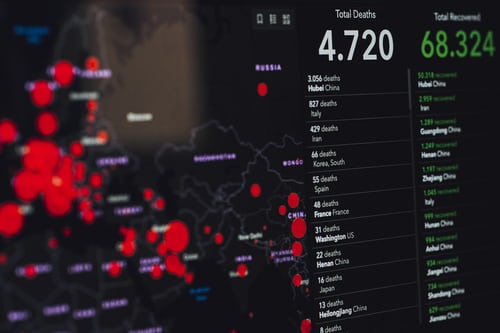GDPR: Impact on data collection at the international level
The European data protection regulation (GDPR), introduced in 2018, set limits on the use of trackers that collect personal data. This data is used to target advertising to users. Vincent Lefrère, associate professor in digital economy at Institut Mines-Télécom Business School, worked with Alessandro Acquisti from Carnegie Mellon University to study the impact of the GDPR on tracking users in Europe and internationally.
What was your strategy for analyzing the impact of GDPR on tracking users in different countries?
Vincent Lefrère: We conducted our research on online media such as Le Monde in France or the New York Times in the United States. We looked at whether the introduction of the GDPR has had an impact on the extent to which users are tracked and the amount of personal data collected.
How were you able to carry out these analyses at the international level?
VL: The work was carried out in partnership with researchers at Carnegie Mellon University in the United States, in particular Alessandro Acquisti, who is one of the world’s specialists in personal digital data. We worked together to devise the experimental design and create a wider partnership with researchers at other American universities, in particular the Minnesota Carlson School of Management and Cornell University in New York.
How does the GDPR limit the collection of personal data?
VL: One of the fundamental principles of the GDPR is consent. This makes it possible to require websites that collect data to obtain users’ consent before tracking them. In our study, we never gave our consent or explicitly refused the collection of data. That way, we could observe how a website behaves in relation to a neutral user. Moreover, one of the important features of GDPR is that it applies to all parties who wish to process data pertaining to European citizens. As such, the New York Times must comply with the GDPR when a website visitor is European.
How did you compare the impact of the GDPR on different media?
VL: We logged into different media sites with IP addresses from different countries, in particular with French and American IP addresses.
We observed that American websites limit tracking more than European websites, and therefore better comply with the GDPR, but only when we were using a European IP address. It would therefore appear that the GDPR has been more dissuasive on American websites for these users. However, the American websites increased the tracking of American users, for whom the GDPR does not apply. One hypothesis is that this increase is used to offset the loss of data from European users.
How have online media adapted to the GDPR?
VL: We were able to observe a number of effects. First of all, online media websites have not really played along. Since mechanisms of consent are somewhat vague, the formats developed in recent years have often encouraged users to accept personal data collection rather than reject it. There are reasons for this: data collection has become crucial to the business model of these websites, but little has been done to offset the loss of data resulting from the introduction of the GDPR, so it is understandable that they have stretched the limits of the law in order to continue offering high quality content for free. With the recent update by the French National Commission on Information Technology and Liberties (CNIL) to fight against this, consent mechanisms will become clearer and more standardized.
In addition, the GDPR has limited tracking of users by third parties, and replaced it with tracking by first parties. Before, when a user logged into a news site, other companies such as Google, Amazon or Facebook could collect their data directly on the website. Now, the website itself tracks data, which may then be shared with third parties.
Following the introduction of the GDPR, the market share of Google’s online advertising service increased in Europe, since Google is one of the few companies who could pay the quota for the regulation, meaning it could pay the price of ensuring compliance. This is an unintended, perverse consequence: smaller competitors have disappeared and there has been a concentration of ownership of data by Google.
Has the GDPR had an effect on the content produced by the media?
VL: We measured the quantity and quality of content produced by the media. Quantity simply reflects the number of posts. The quality is assessed by the user engagement rate, meaning the number of comments or likes, as well as the number of pages viewed each time a user visits the website.
In the theoretical framework for our research, online media websites use targeted advertising to generate revenue. Since the GDPR makes access to data more difficult, it could decrease websites’ financing capacity and therefore lead to a reduction in content quality or quantity. By verifying these aspects, we can gain insights into the role of personal data and targeted advertising in the business model for this system.
Our preliminary results show that after the introduction of the GDPR, the quantity of content produced by European websites was not affected, and the amount of engagement remained stable. However, European users reduced the amount of time they spent on European websites in comparison to American websites. This could be due to the the fact that certain American websites may have prohibited access to European users, or that American websites covered European topics less since attracting European users had become less profitable. These are hypotheses that we are currently discussing.
We are assessing these possible explanations by analyzing data about the newspapers’ business models, in order to estimate how important personal data and targeted advertising are to these business models.
By Antonin Counillon













Leave a Reply
Want to join the discussion?Feel free to contribute!